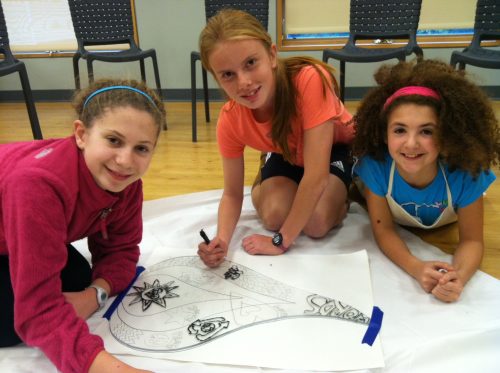Omanut (visual art) is a new approach to Jewish learning for Grades 4-5 at Temple Beth Elohim (TBE) in Wellesley that launched in 2014. The program provides students with sophisticated and innovative learning experiences as they explore the intersection of their own creativity, Jewish learning, and the arts.
Omanut meets 12 times a year, for two and a half hours per session. Students also meet separately each week for small-group Hebrew learning. Omanut sessions are centered around three overarching lenses: The Space Around Us/ סביבנו, The Space Between Us/ בינינו, and The Space Within Us/ בתוכנו. These lenses frame the exploration of a range of Jewish ideas and texts drawn from the areas of Tefillah (prayer), Bible, Mitzvot (commandments), and Holidays.
“I think [the learning] is something I will remember because of the fact that it’s art and the [Jewish] text relates to the art—it’s a way for me to think about it in a different way that I wouldn’t have thought of if I hadn’t been a part of this program [Omanut].”
—Sadie, age 9
Walk into an Omanut classroom at TBE, and you see a buzz of creativity as students explore Jewish concepts and texts through paint, clay, and collage materials– simultaneously getting messy with the materials and wrestling with the text.
Eavesdrop on one of our parent parallel-learning sessions and you hear animated, high-level conversation with our clergy about the Jewish concepts their children are about to learn–finding deeper understanding of the texts and ideas in order to discuss and reinforce the concepts at home.
Explore our building and you notice examples of how Omanut has already contributed positively to our community. On a coffee table, you see copies of books written by seniors in our congregation, illustrated by students in Omanut. Hanging by a window you see stained glass flames created by our Omanut students reflecting the light they bring to themselves, their community, and the world, one hung for each night of Chanukah.
The Nexus Between Text and Art
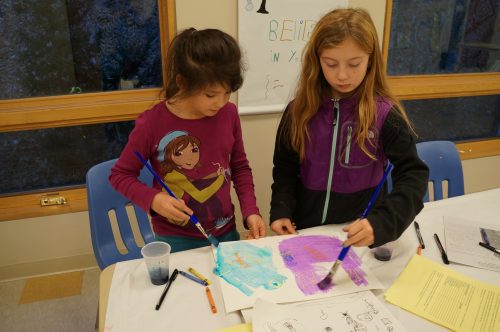
Pictures are better than words. Here are a few of both to illustrate an example of using art as a tool for a meaningful Jewish learning experience.
During our unit, “The Space Around Us,” students explored big questions ranging from “What makes a space sacred?” and “What elements of a space or object help make it sacred in a Jewish way?” to “How can we play an active role in designing the spaces around us in order to make those spaces more reflective of our values?” They explored Jewish texts to learn about concepts of Hiddur Mitzvah (beautifying/enhancing a commandment) and Kavanah (intention) and then worked with glass tubes, wire, and beads to design a Mezuzah (a piece of parchment, usually housed within a decorative case, inscribed with Hebrew verses from the Bible) for their home.
 Personal Meaning
Personal Meaning
The students were asked to really consider the idea of Kavanah as an artist and make choices in their design that had personal meaning to them. One 4th grader chose his beads in a range of blues stating that the blues reminded him of the sky and when we say certain prayers we rise/stand to be closer to God so he wanted the Mezuzah to remind him of being closer to God. Another used a rainbow pattern but specifically turned it upside down to serve as a reminder to consider other perspectives.
Children then explored the Sh’ma and V’Ahavta (prayers found within the Mezuzah) seeking to gain insight into the notion of the Mezuzah as a reminder of God’s presence and into the commandments we follow. They then created their own colorful paper and wrote personal blessings to put in their Mezuzot (plural of Mezuzah)–things they wanted to be reminded of whenever they see their Mezuzah hanging in their home.
The colorful paper gave a rich depth and beauty to the clear Mezuzot, just as their creative prayers and intention give a rich depth and beauty to their learning.
 Congregational Impact
Congregational Impact
Thinking creatively about different learning modalities has changed the fabric of TBE and inspired us to redefine the way we approach learning. Starting in fall 2016, students and families in grades 4-5 will choose between four learning tracks: Omanut (visual art-based learning), Beit Midrash (“House of Study” – book-based learning), Tagliyot (“Discoveries” – learning through science and technology), and Limud (traditional learning). In addition, we now find ways to incorporate more multi-sensory learning for our 6th and 7th graders and teens, adding elements of artistic exploration throughout all of our programming. Through partnership with and support from Boston’s Combined Jewish Philanthropies, we are able to envision a learning community that enlivens Jewish learning for all.
Our Omanut teachers speak of the enthusiasm they see in their students and the depth of their thinking and learning as reflected in their amazing comments (and artwork). Parents describe the eagerness their children demonstrate to come to Omanut ready to engage, but it is the words of the kids themselves that constantly remind us of the power of this kind of innovative learning and shared process:
“I just feel really good in [Omanut]. It just makes me feel like I could bring out what I have inside of me and I could describe all the things that I feel. I think it’s a sacred place.”
—Sophia, age 9
Hannah Richman is the Director of Omanut at Temple Beth Elohim in Wellesley.
Tova Speter is a CJP Consultant with Jewish Learning Connections, community artist and art therapist, and founder and director of The MEM Project, offering Jewish art workshops for young adults in the Boston area.
This is the fourth in a series of blog posts from Jewish Learning Connections. Read the introductory post here; learn about innovative learning in two other congregations here and here.
This post has been contributed by a third party. The opinions, facts and any media content are presented solely by the author, and JewishBoston assumes no responsibility for them. Want to add your voice to the conversation? Publish your own post here. MORE

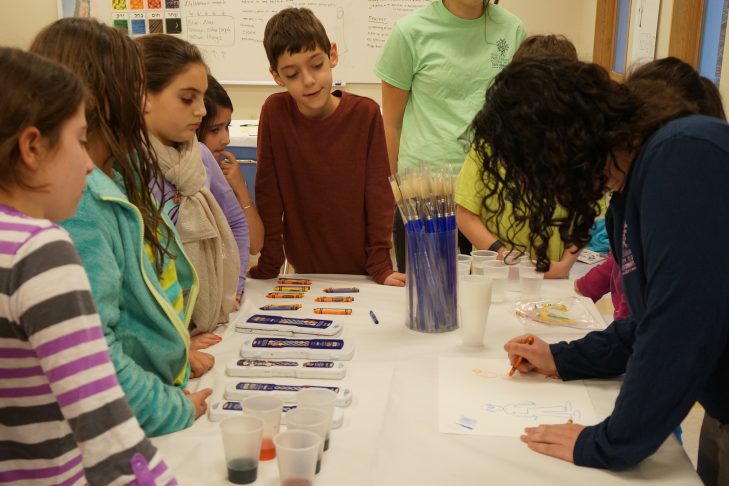
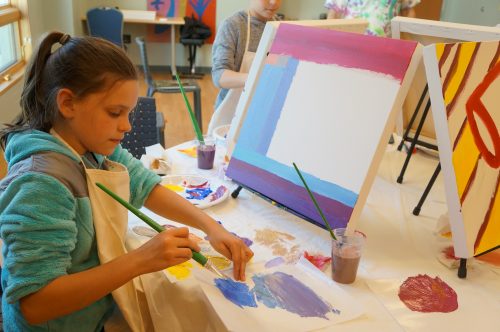

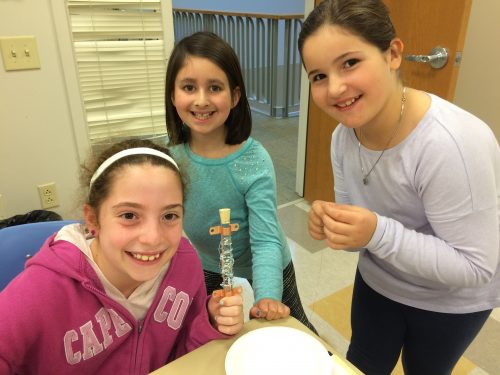 Personal Meaning
Personal Meaning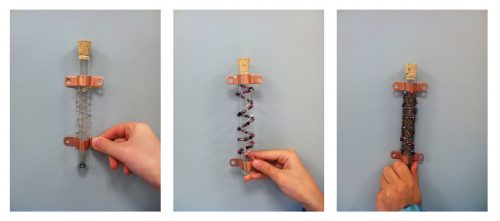
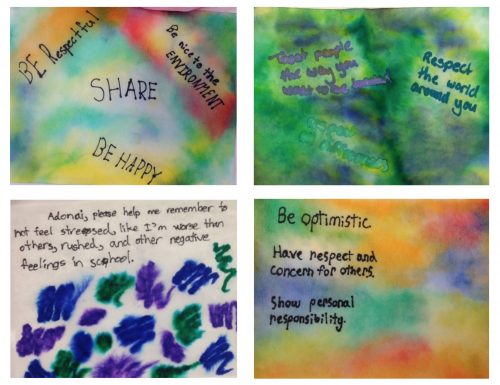
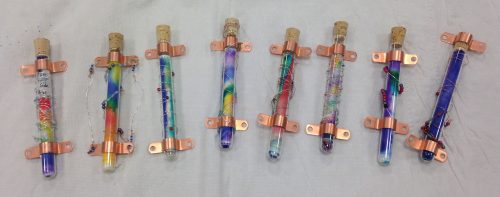 Congregational Impact
Congregational Impact